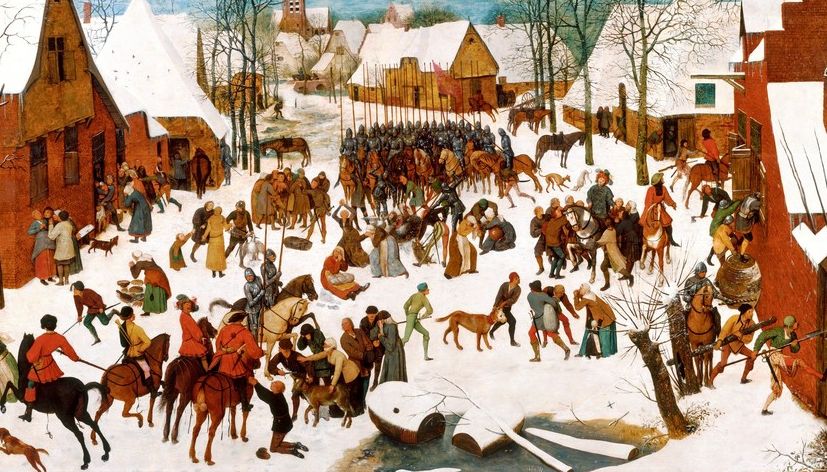
Surprising Revelations
Close examination of objects in the Royal Collection reveals unexpected details
Massacre of the Innocents
c.1565-67RCIN 405787
This painting appears to show a sixteenth century Netherlandish village being plundered, with soldiers beating peasants, clambering into buildings and stealing livestock. The artist, Pieter Bruegel the Elder, evokes the freezing cold temperatures with icicles dripping from the rooftops, a slushy road in the distance and frozen pond. You can almost feel the wind whistling through the open windows and hear the rattle of the dry tree branches. But look more closely and you might start to notice strange details. Why is a woman grieving over what looks like a picnic laid out in the snow?
Beneath the bundles of food and animals, the artist originally painted infant children being slaughtered – the boys under the age of two who were killed on Herod’s orders, as recorded in the Gospel of Matthew. The building on the right has a sign identifying it as the Star Inn, a reference to the birth of Christ.
Very early in the picture’s history (before 1621), the most gruesome details were painted over, probably while it was in the possession of the Habsburg Holy Roman Emperor Rudolf II. This may have been to avoid direct comparisons with contemporary events during the Eighty Years War, when Spanish troops occupied the Netherlands and ruled harshly on behalf of Philip II of Spain.
When this painting was conserved in the 1980s, the decision was made to retain most of the overpaint, because the changes were made so long ago. With time it has become more transparent, allowing the painting to be read on both levels.







